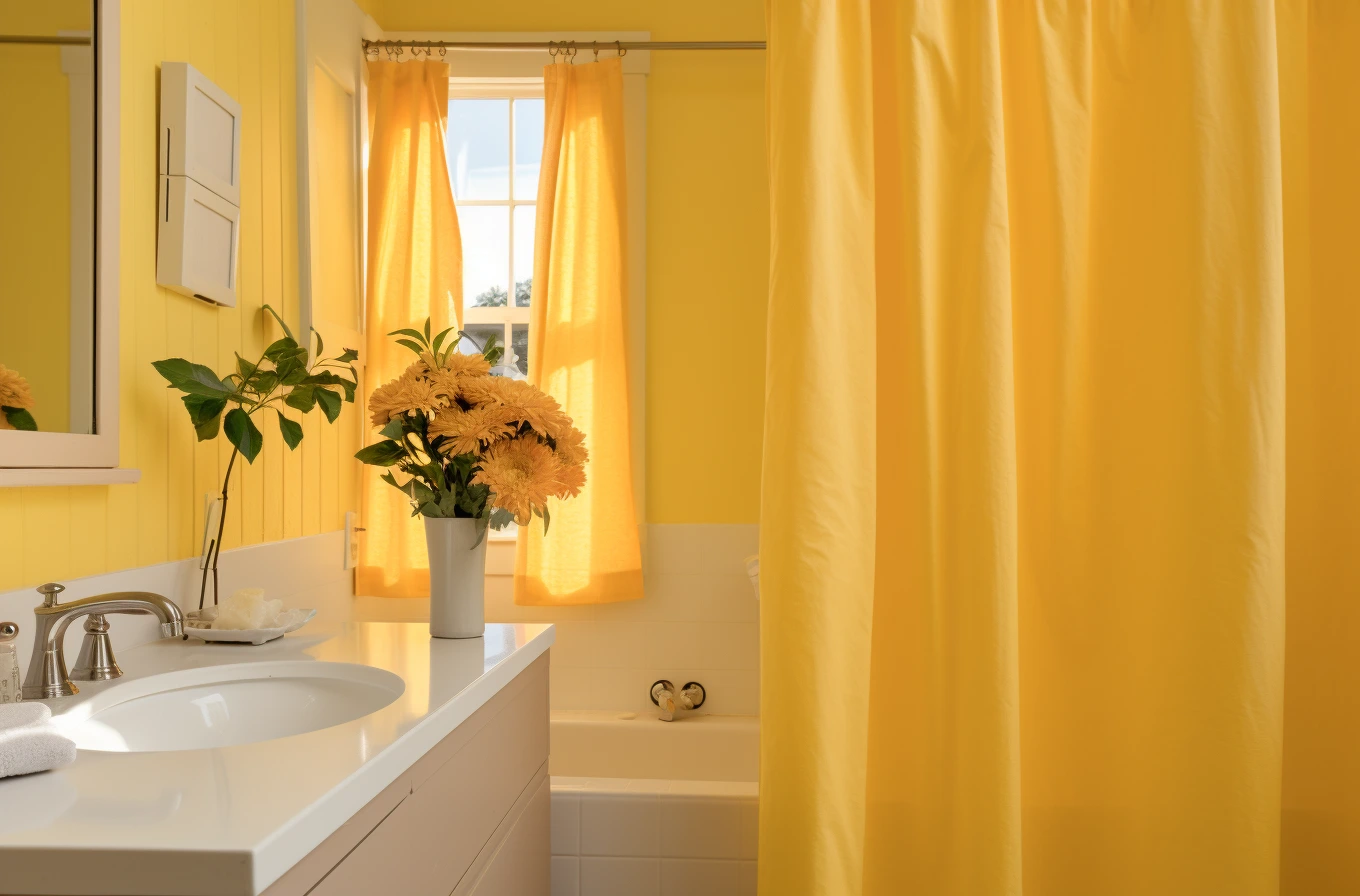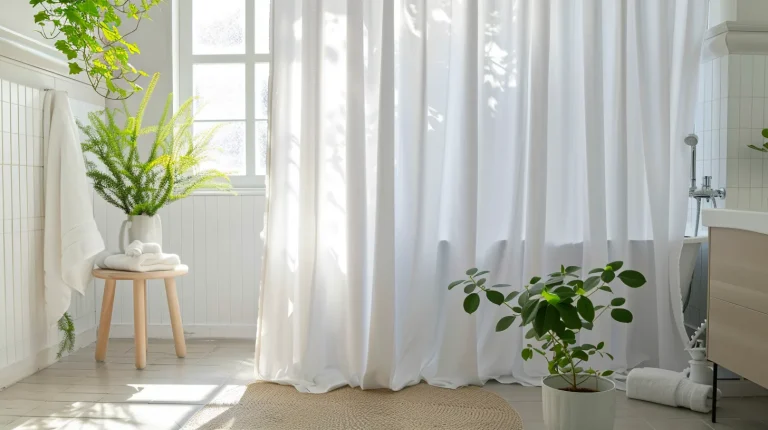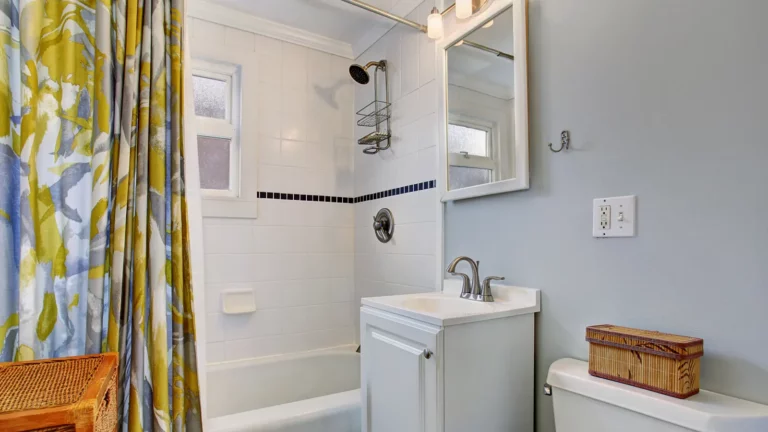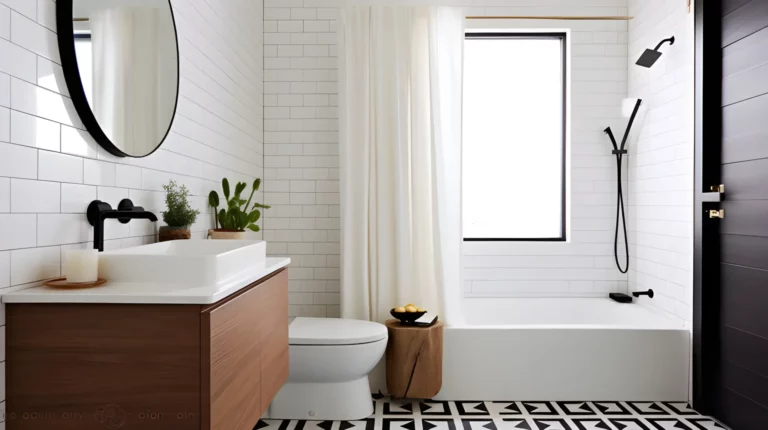5 Easy and Effective Hacks for How to Fix a Broken Shower Curtain Rod
How to fix a broken shower curtain rod can be a nuisance, leaving your bathroom exposed and your shower curtain dragging. Fixing a broken curtain rod is usually an easy DIY project, whether the plastic rod has cracked, the tension poles have come loose, or wall mounts have detached. This guide will walk you through identifying the issue with your shower rod and the common fixes, from quick repairs to full rod replacements. Follow these tips to get your shower enclosure contained again.
Table of Contents
How to Identify the Problem with the Shower Curtain Rod
The first step in fixing a broken shower curtain rod is identifying where the issue originates. Here are some of the most common shower rod problems:
- Cracked or broken rod: Plastic shower rods can become brittle and crack over time, especially cheaper rods. Check for visible cracks or breaks in the rod across the top.
- Detached tension rod: Tension shower rods use spring loaded tension to stay in place between two walls. If the tension fails, the rod can fall or detach from the walls.
- Wall mount issues: Permanent shower rods use wall mounts secured into wall studs or drywall anchors. If these fail, the rod can sag or fall off.
- Rust: Metal rods like stainless steel can corrode over time, leading to rust and cracks. Rust indicates the rod needs replacement.
- Loose fasteners: Loose screws, bolts, or other hardware can cause the rod to sag and fall off the wall mounts.
Identifying the origin of the issue guides the repair. For tension rods, focus on the tension mechanism. For permanent rods, inspect the wall mounts and hardware. The location and extent of the damage also determines if you can fix the current rod or need to replace it.
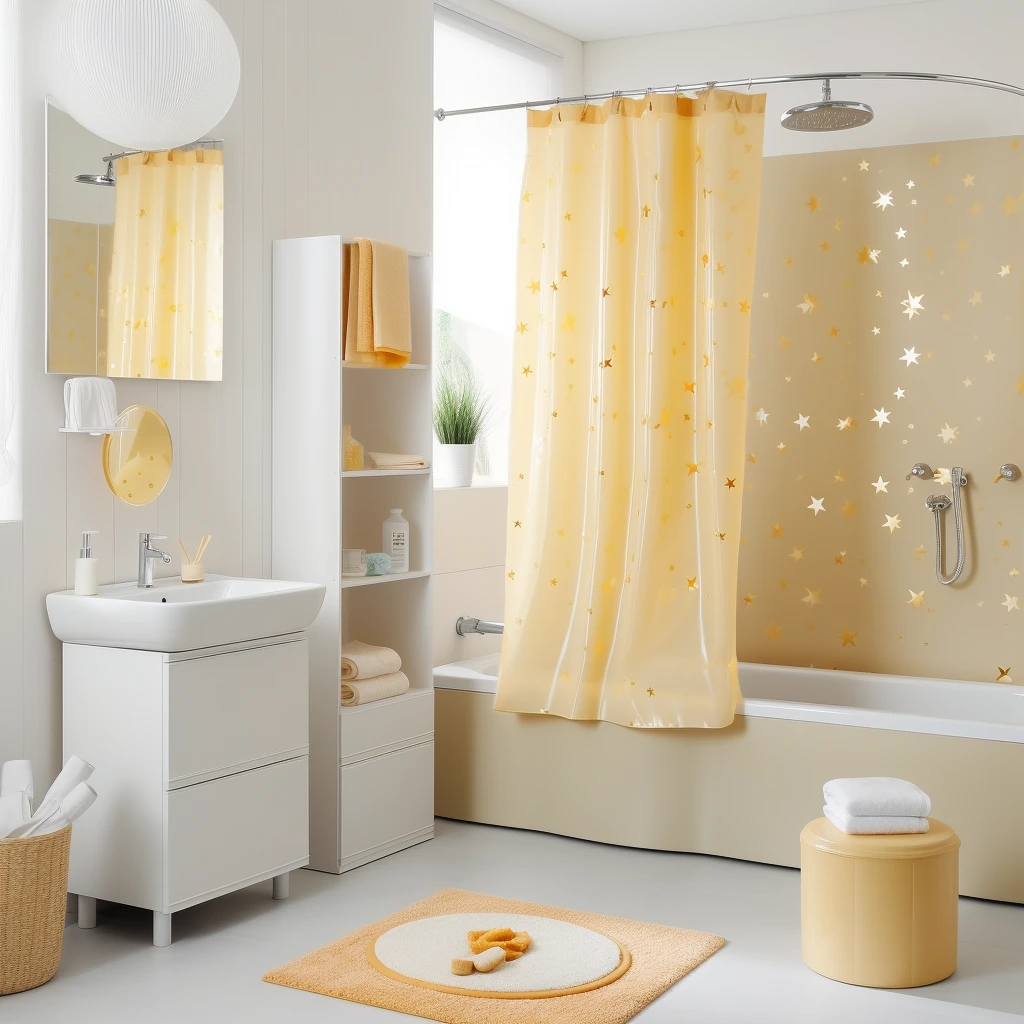
Common Fixes for a Broken Shower Curtain Rod
Once you’ve identified the problem, try one of these common fixes to repair a broken curtain rod:
Replacing or Repairing the Rod
If the shower rod itself is cracked or so corroded that it can longer hold curtains, replacing the rod is the best option. Measure the existing rod and buy a new one the same length. For tension rods, ensure the replacement rod fits the doorway width. For permanent rods, carefully remove it from the wall mounts.
For small cracks in plastic rods, use waterproof epoxy adhesive to glue the crack and strengthen the rod. Lightly sand any rough edges first. Spread adhesive into the crack and hold firmly for 30-60 seconds as it sets. Wipe away excess. The fixed rod can be rehung once dry.
Adjusting the Tension Mechanism
If a tension rod is too loose and falls down or sags, tighten the tension mechanism. Locate the adjustable tension knobs or locks on the ends of the rod. Tighten the knob clockwise or engage the tension lock. Test to ensure the rod fits snugly without bending. Add rubber stoppers to the ends to improve grip.
Using Adhesive or Sealant
Sometimes tension rods or wall mounts slip because the points of contact are too smooth. Add adhesive or sealant to help grip the wall. For tension rods, put small dots of clear silicone sealant on the tube ends, then reinsert into the wall. Allow to fully cure for 24 hours before use.
For wall mounts, use adhesive foam strips to increase friction where mounts attach to the wall and anchoring hardware. Clean the area thoroughly before applying adhesive strips.
Tightening or Securing Wall Mounts
Sagging permanent rods are often due to loose hardware. Take the rod down and ensure screws or bolts through the wall mount plates are tight and screwed into studs or anchors. Tighten any loose bolts with a screwdriver. If anchors have pulled out of the wall, move the mounts over to studs or re-anchor.
Use hollow wall anchors if studs aren’t available. Drill pilot holes and tap anchors into the holes, then reinstall mounts. Apply adhesive foam behind mounts to help hold. Reinstall the rod once mounts are secure.
Installing a New Shower Curtain Rod
For permanent rods with damage beyond repair or unsuccessful fixes, install a new rod and wall mounts. Take accurate width measurements and purchase a replacement rod. Remove old mounts fully and patch holes. Mark new mount locations at the ideal height, usually 7 feet high for standard tubs. Drill into studs if possible or use hollow wall anchors.
Install new mounts according to the manufacturer’s instructions. Hold the rod up, line up the ends with the mounts, andfasten securely into place. Check that the new rod feels sturdy before hanging curtains.
DIY Projects to Repair a Broken Shower Curtain Rod

These easy DIY tutorials demonstrate ways to fix some common issues with shower rods using materials you likely have on hand:
Plastic Crack Repair: Follow a step-by-step guide using basic epoxy to structurally repair cracks and breaks in plastic or nylon rods. Ensure long drying time for a lasting fix.
Tension Rod Slippage: Use self-adhesive foam strips and blocks to add grip and stop tension rod slippage and falling. Simple adhesive dots also work short term.
Wall Mount Reinforcement: See how to reinforce loose wall mounts by moving to studs, using hollow wall anchors, and adding adhesive foam for a sturdier hold.
Rusted Metal Rod Restoration: Learn techniques and products to remove rust from metal rods, then reseal and protect the surface. Determine if restoration is worth the effort vs replacement.
DIY Tension Rod: Make your own tension rod with dowels, bungee cords, and basic tools. Customize the length as needed. Great for temporary use.
Maintaining and Preventing Shower Curtain Rod Issues
With proper care and maintenance, you can prevent shower rod damage and extend the life of new rods. Follow these tips:
- Inspect rods periodically for cracks, rust, and loose hardware. Catch issues early before major damage occurs.
- Clean plastic and metal rods with gentle soap and water to remove grime and mineral deposits from water. Avoid harsh cleaners.
- Apply car wax occasionally to metal rods to protect the surface from moisture damage. Buff to a shine.
- Ensure tension rods fit the opening properly without bending or straining. Adjust tension as needed.
- Use curtain weights or magnets to keep curtains from pulling on rods. Frequent tugging can loosen mounts.
- Install rods into wall studs for maximum support. Use quality anchors if studs aren’t available.
- Choose quality rods made of rust-resistant metals and durable plastics. Spring for permanent rods instead of tension rods when possible.
- Remove tension rods when not needed to extend the spring lifetime. Store safely.

With the right fix for the issue at hand, you can have your shower curtain rod working again in no time. Follow with regular maintenance to maximize its lifespan. If the rod is too far gone, don’t hesitate to replace it for a fresh start. Installing a new high-quality rod can make the shower experience much more pleasant and prevent premature issues.
When purchasing a new shower curtain, consider one made of natural cotton for durability and sustainability. Cotton shower curtains let air circulate to prevent mold and mildew growth. They are also washable, so you can easily keep them fresh. Check out beautiful cotton shower curtains at online stores like CottonCat.com.
FAQs
Q: What is a tension rod and how does it work?
A: A tension rod is a type of curtain rod that uses internal pressure to stay in place. It’s adjustable and typically used inside a house for hanging curtains or shower curtains without the need for drilling holes into the wall.
Q: How to fix a broken shower curtain rod that keeps falling down?
A: One common solution is to ensure the rod is the correct length for the space. You can also try cleaning the ends of the rod and the contact surface to improve the grip. Additionally, placing a small piece of tape on the rod’s end to create a tighter fit might help.
Q: What are some quick and easy ways to secure a tension rod in place?
A: One idea is to use an extra pressure cap or holder at each end to provide additional support. Another option is to twist the rod slightly to increase pressure against the walls.
Q: Can I use a tension rod to hang a heavy shower curtain?
A: While tension rods are typically suitable for lightweight curtains, if you’re dealing with a heavier fabric or curtain, consider finding a permanent solution such as installing a fixed rod or using a sturdier tension rod designed for heavier loads.
Q: What should I do if one end of the tension rod comes apart?
A: If the rod comes apart, make sure to clean the ends and reassemble it carefully. Check if there is a mechanism inside for locking or twisting the pieces back together securely.
Q: I’ve noticed the tension rod is leaving a mark on my tile. How can I prevent this?
A: To avoid leaving marks on the tiles, consider placing a protective cap or pad on the ends of the tension rod. Alternatively, you can use a fixer to add a soft material to the contact points.
Q: Is there a way to increase the pressure of a tension rod without twisting it?
A: If you’re looking to enhance the grip without twisting the rod, one suggestion is to position a small piece of rubber or foam between the rod and the wall to create additional friction.
Q: How can I make sure the tension rod stays in place without constantly readjusting it?
A: You can ensure the tension rod’s stability by checking that it’s placed in the correct position and that the walls are clean and dry. Additionally, periodically inspect and tighten the rod if necessary.
Q: What is the largest diameter of tension rod that is available in the market?
A: The largest diameter of a tension rod available in the market varies depending on the brand and type. It’s best to check with the manufacturer or supplier for specific size options.
Q: Can a tension rod be used to create a makeshift privacy barrier in a living space?
A: Yes, tension rods can be used to hang lightweight curtains to create a temporary or semi-permanent privacy barrier within a house or apartment.

